Key takeaways:
- Climate action advocacy involves emotional connection and community engagement, turning personal experiences into collective action.
- Identifying local climate issues requires listening to community members and gathering their insights through conversations and surveys.
- Effective outreach includes hosting events, leveraging social media, and collaborating with local organizations to foster broad participation.
- Measuring success should combine qualitative narratives and quantitative data to assess community impact and inspire ongoing engagement.
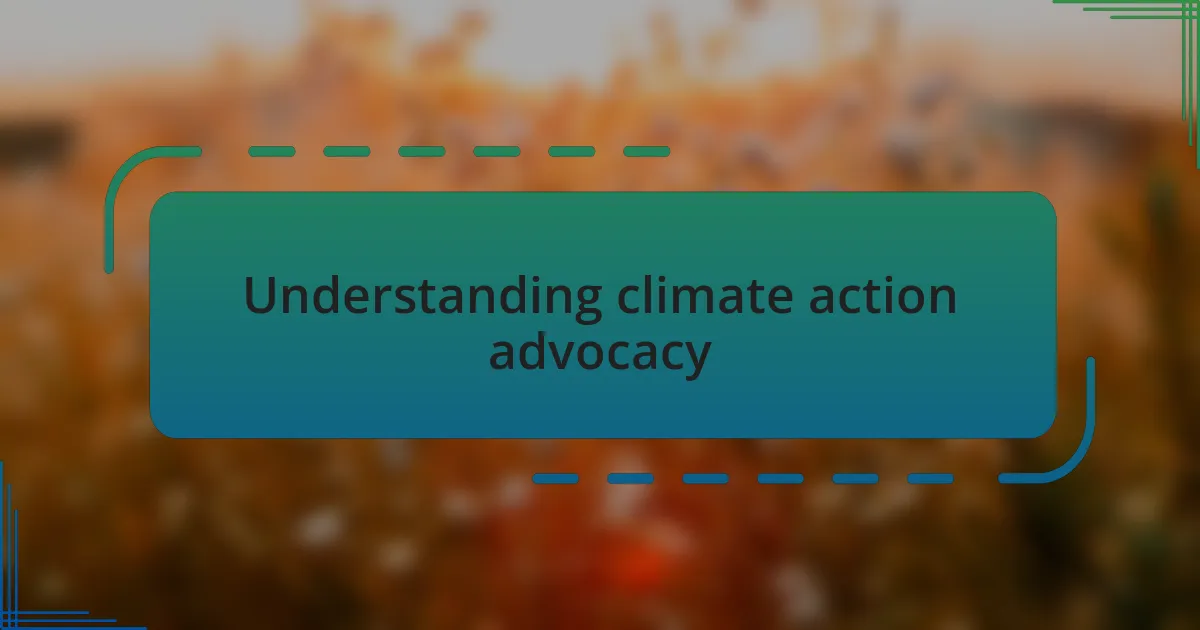
Understanding climate action advocacy
Climate action advocacy goes beyond just voicing concerns; it’s about creating tangible change in our communities. I remember the first time I attended a local town hall meeting focused on environmental policies. The energy in the room was palpable, as community members passionately shared their visions for a sustainable future. It struck me that advocacy isn’t just a personal endeavor; it’s a shared commitment to better our surroundings.
Understanding climate action advocacy means recognizing the diverse perspectives within our community. When I engaged with fellow advocates, I realized that everyone had their own unique experiences with climate issues, from witnessing extreme weather to feeling the direct impact on local wildlife. This diversity enriches our approach, making our advocacy efforts more comprehensive and relatable. Have you ever considered how your personal experiences shape your view on climate change? It’s these stories that resonate, turning abstract concepts into relatable realities.
Connecting emotionally with the climate crisis is essential for effective advocacy. I once spoke with a young student who expressed fear about the future of our planet, a sentiment I could deeply relate to. That conversation highlighted the importance of not just addressing facts, but also fostering hope and resilience within our communities. Advocacy isn’t merely about highlighting the problems; it’s about empowering each other to be part of the solution.

Importance of community engagement
Engaging the community is crucial for fostering a sense of ownership and responsibility toward climate action. I remember organizing a clean-up event in my neighborhood, where we not only picked up trash but also shared stories about why we cared for our local environment. This experience taught me that when people unite around a common cause, they feel empowered, not just to act, but to advocate for broader changes within the community.
It’s fascinating to see how community discussions can spark new ideas and initiatives. During a recent workshop, I posed the question, “What does sustainability look like for you?” The answers ranged from local food sourcing to renewable energy projects. Each response made it clear that community engagement isn’t just about gathering support; it’s about cultivating innovative solutions that resonate with people’s values and experiences. How often do we overlook the untapped potential within our neighbors to drive positive change?
When community members feel involved, the momentum for advocacy grows exponentially. I recall attending a local climate rally where individuals from various backgrounds shared their stories. Listening to their experiences was not just inspiring; it was a reminder that we are all part of a larger narrative. I often ponder, how powerful would it be if every community tapped into that potential? By encouraging active participation, we can create lasting change that reflects the collective voice of the people.
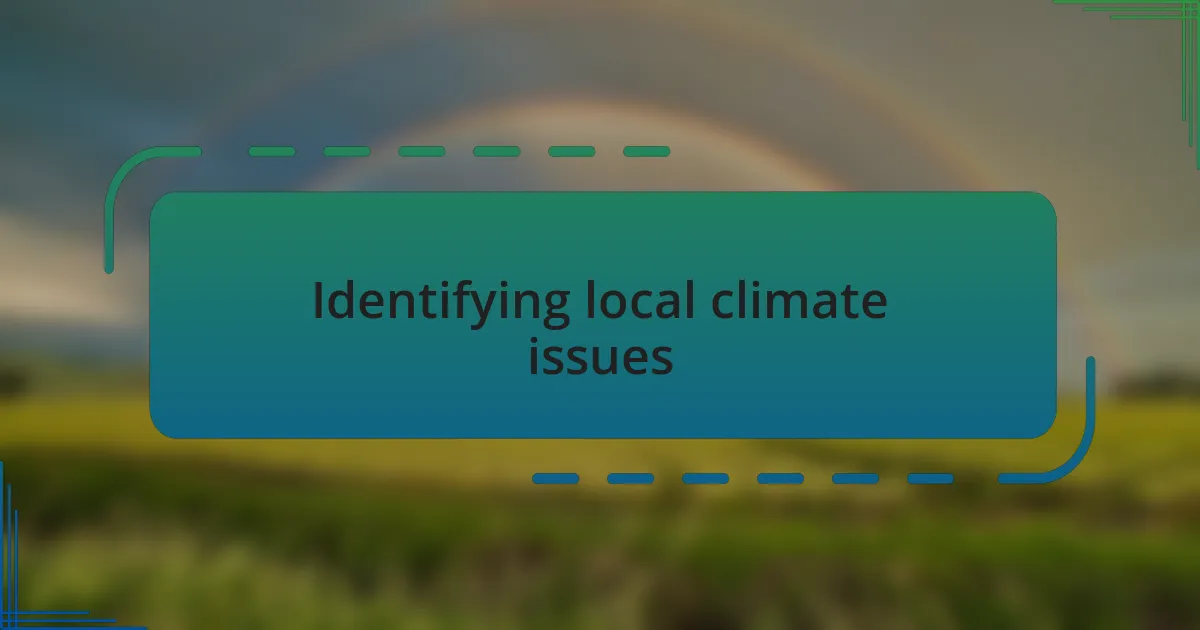
Identifying local climate issues
Identifying local climate issues starts with listening to the community. I remember walking through my neighborhood on a sunny afternoon and noticing how many people were concerned about flooding in a specific area during heavy rains. It struck me that these local observations are often overlooked yet serve as a vital starting point for understanding broader climate concerns. Have you ever stopped to ask your neighbors what environmental changes they’ve witnessed firsthand?
Another effective way to pinpoint local issues is by conducting surveys or informal interviews. I once created a simple questionnaire to distribute at a local farmers’ market, asking about people’s biggest frustrations related to climate. The responses varied, from worries about air quality to a lack of green spaces. This direct engagement not only gathered valuable insights but also reinforced the idea that everyone’s voice matters in shaping our collective climate narrative.
Finally, attending town hall meetings or community forums can be essential for identifying climate priorities. I vividly recall a meeting where residents passionately discussed the need for better waste management initiatives. Listening to their heartfelt concerns not only deepened my understanding of local issues but motivated me to join forces with them for advocacy efforts. How often do we underestimate the power of community dialogue in driving meaningful change?

Strategies for community outreach
One of the most impactful strategies for community outreach is hosting local events centered on climate action. I organized a community picnic where we showcased sustainable practices, and it was amazing to see neighbors come together, share ideas, and learn from one another. Watching families engage with hands-on workshops, such as building birdhouses from recycled materials, truly highlighted the importance of fostering a sense of belonging in our shared mission. Have you ever considered how communal experiences can ignite a passion for advocacy?
Utilizing social media platforms can also be vital for reaching a wider audience beyond just your immediate community. I started a dedicated Facebook group to facilitate discussions around local climate initiatives, which snowballed into more than just online interactions. People began sharing resources, organizing meetups, and even collaborating on projects. It’s incredible how a simple digital space can foster connections and spur collective action. Isn’t it fascinating how technology can bridge gaps that might otherwise define us?
Moreover, collaborating with local organizations is a strategy that amplifies outreach efforts significantly. I partnered with a nearby environmental nonprofit for a clean-up drive at our local park, and not only did we make a tangible impact, but we also garnered more volunteers from the community. The energy was palpable as everyone united for a common purpose. How often do we overlook the power of collaboration in enhancing our advocacy efforts?
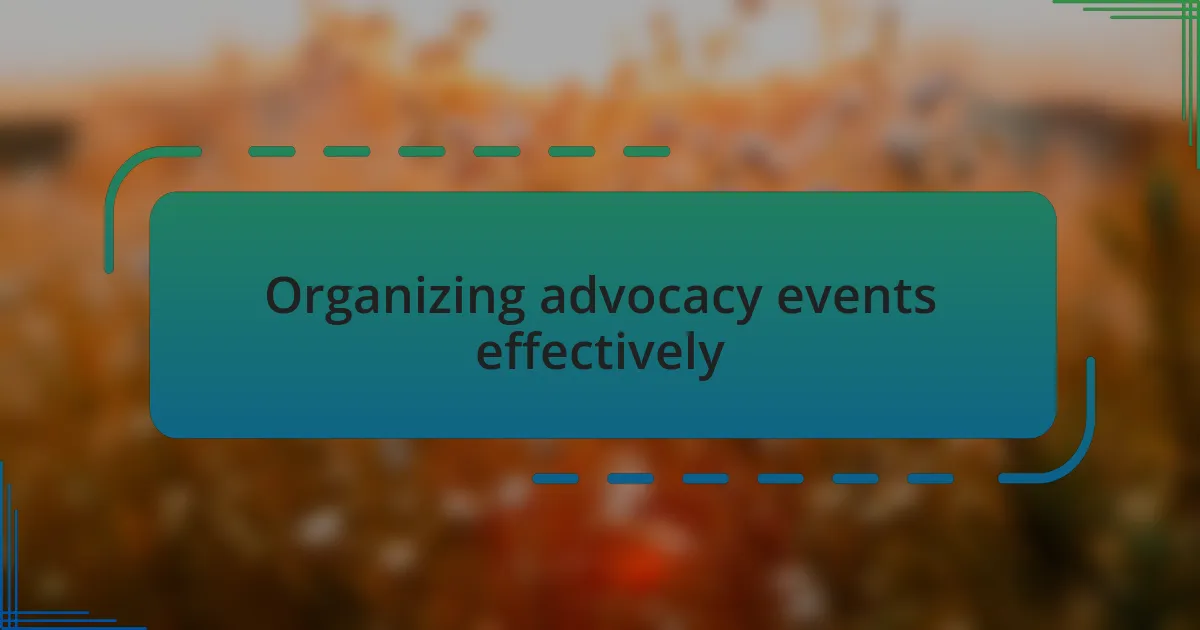
Organizing advocacy events effectively
Organizing advocacy events effectively requires meticulous planning and a clear focus on the community’s interests. During one of my local climate workshops, I found that incorporating local stories about environmental challenges made the event resonate more. When attendees shared their personal experiences with flooding due to climate change, it created an emotional connection that transformed the room’s energy. How can we ensure that our event themes reflect the realities of those we’re trying to engage?
I realized that logistics play a vital role in the success of any event. For instance, I once made the mistake of holding a recycling event during a major local festival, which meant fewer participants. By engaging in careful scheduling and choosing times when community members were available, I noticed a significant uptick in participation. Have you thought about how timing can influence engagement and turnout for your advocacy initiatives?
Finally, creating inclusive spaces is essential. I’ve learned that providing various activities catered to different age groups encourages wider participation. During a recent advocacy fair, while adults discussed policy, kids were busy creating environmental art. It warmed my heart to see intergenerational conversations bloom. How can we design our events to inspire the next generation while also empowering the community today?
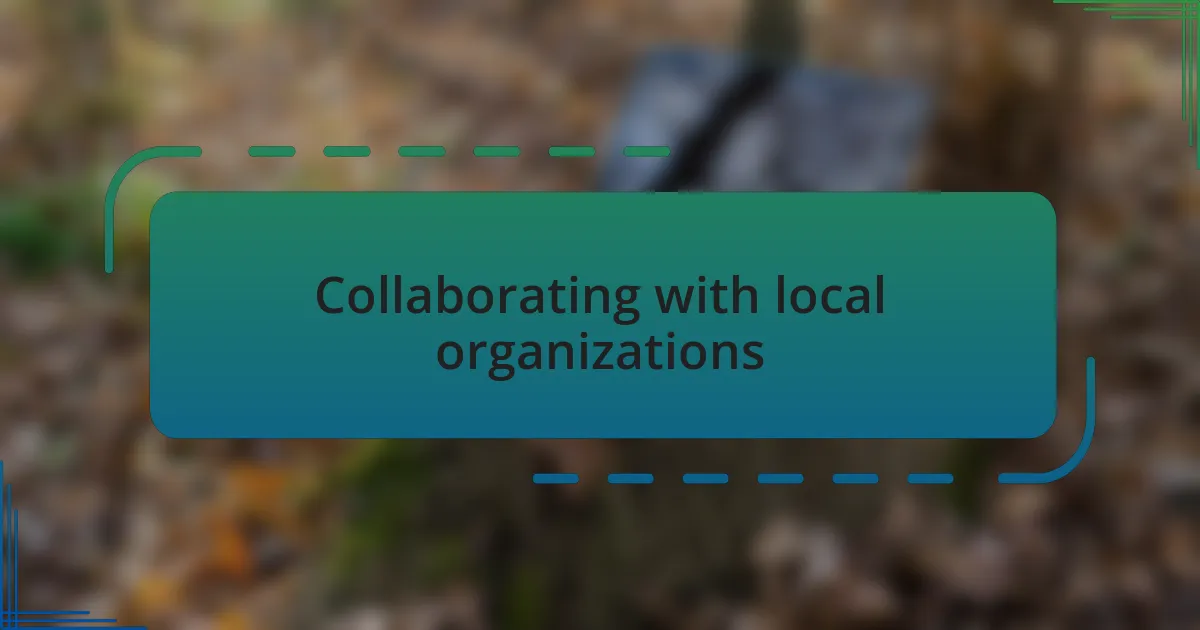
Collaborating with local organizations
Engaging local organizations has been a game changer for my advocacy efforts. When I teamed up with a nearby environmental group, it turned into a collaboration that amplified our voices. We co-hosted a community cleanup and, seeing neighbors band together, I felt an overwhelming sense of solidarity. Have you ever experienced how shared goals can ignite passion within a community?
Partnering with local businesses brought an unexpected spark to our efforts. For a tree-planting event, a local café donated coffee, turning a simple activity into a community celebration. This not only boosted attendance but fostered an atmosphere of support and gratitude. It hit me then how impactful local sponsorships can be—how can we better leverage these relationships to create memorable experiences that resonate with our communities?
I’ve also found that working with schools can deepen advocacy outreach significantly. After organizing a workshop at a local high school, many students ended up championing the cause among their peers. Their enthusiasm reminded me of the importance of engaging youth; they often become powerful advocates in their own right. How can we adapt our messaging to effectively reach and inspire the younger generation in our advocacy efforts?
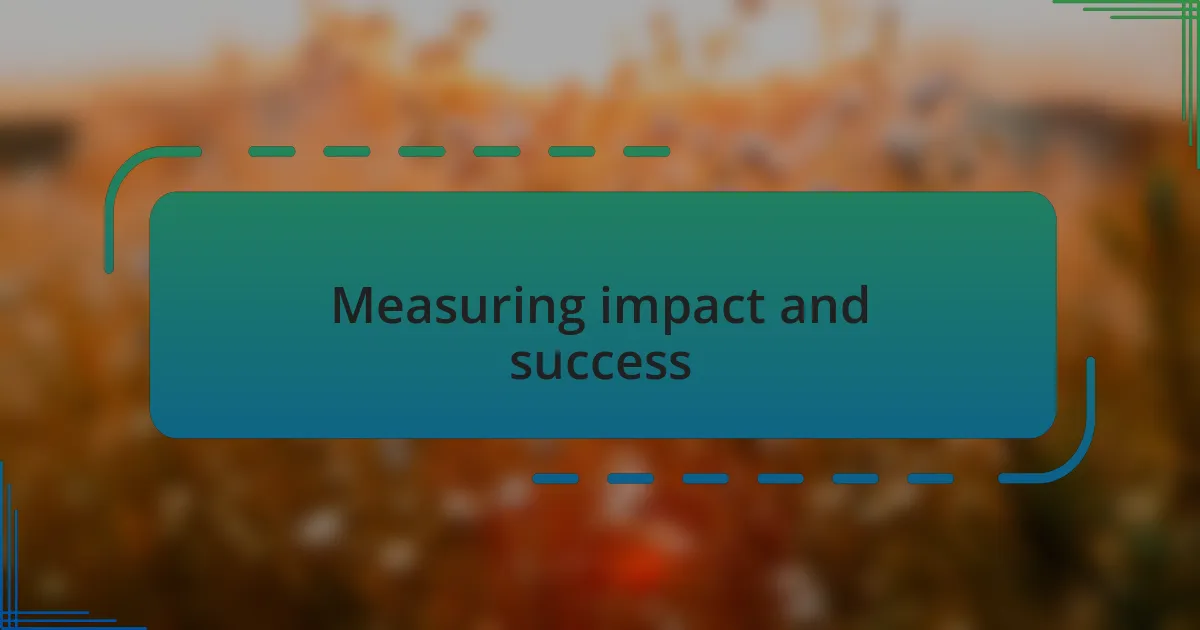
Measuring impact and success
Measuring the impact of community engagement in advocacy truly requires both qualitative and quantitative approaches. I recall analyzing data from surveys distributed after a couple of our events. We saw a 40% increase in community members expressing awareness about climate issues. It was eye-opening to see numbers translate into real-life conversations taking shape among my neighbors.
I’ve also found that storytelling plays a powerful role in gauging success. Listening to community members share their personal journeys—like one participant who decided to implement sustainable practices in their home—added a meaningful layer to our impact assessment. It posed a crucial question: how can we better integrate these narratives into our strategy for future initiatives?
Finally, I emphasize tracking long-term changes. For instance, after several months of our clean-up campaigns, I noticed an uptick in litter reduction in certain areas—something I had never expected to witness firsthand. What strategies can we employ to ensure our advocacy efforts lead to sustained behavioral changes in our communities? Each observation reinforces my belief that continuous engagement is vital for long-lasting impact.